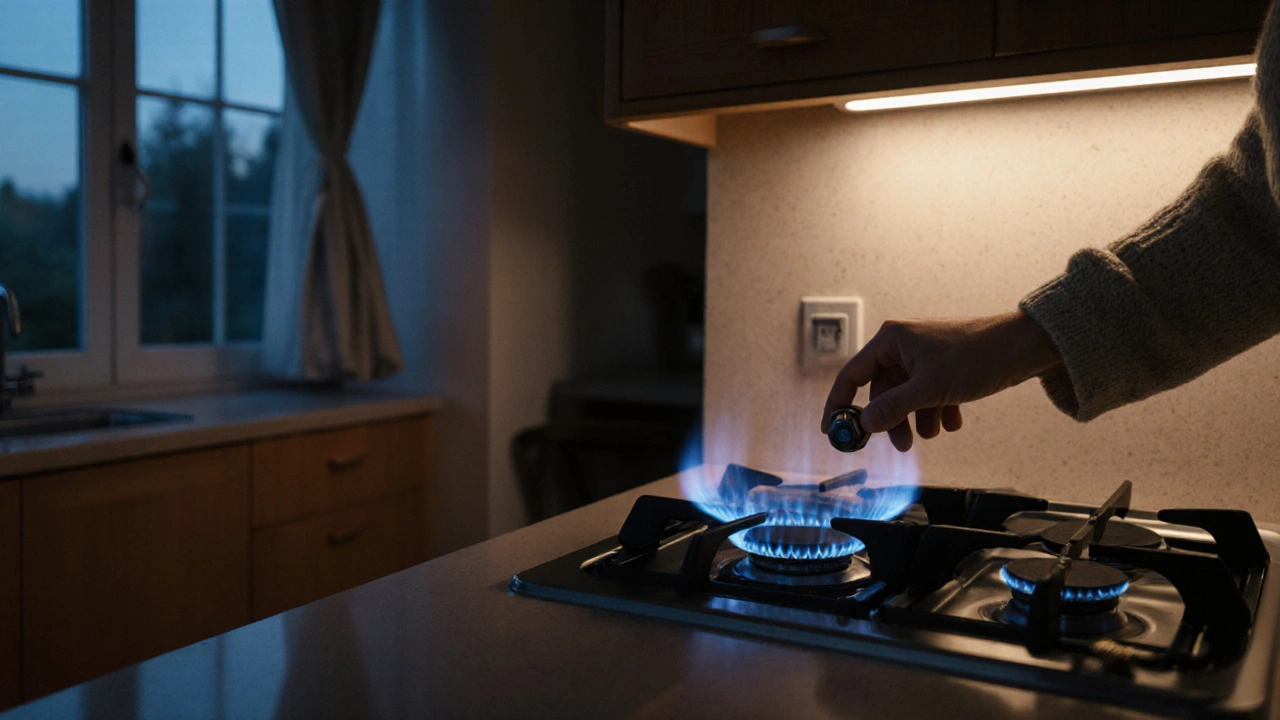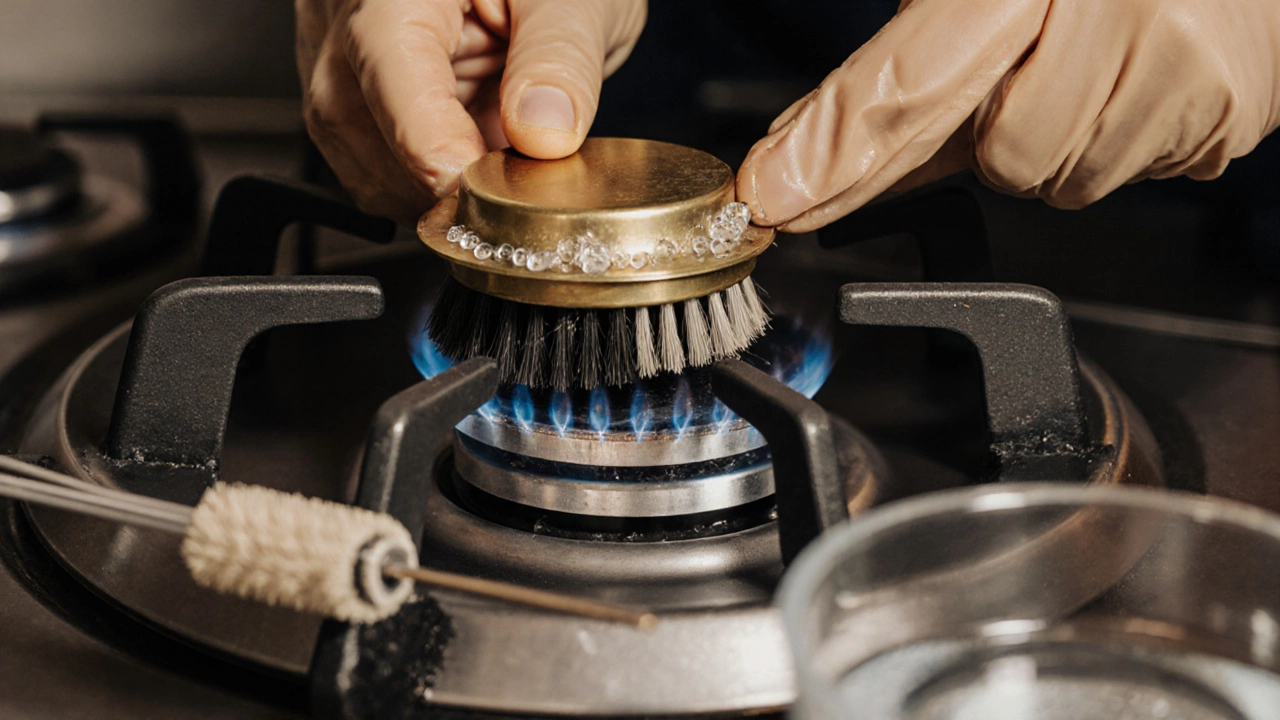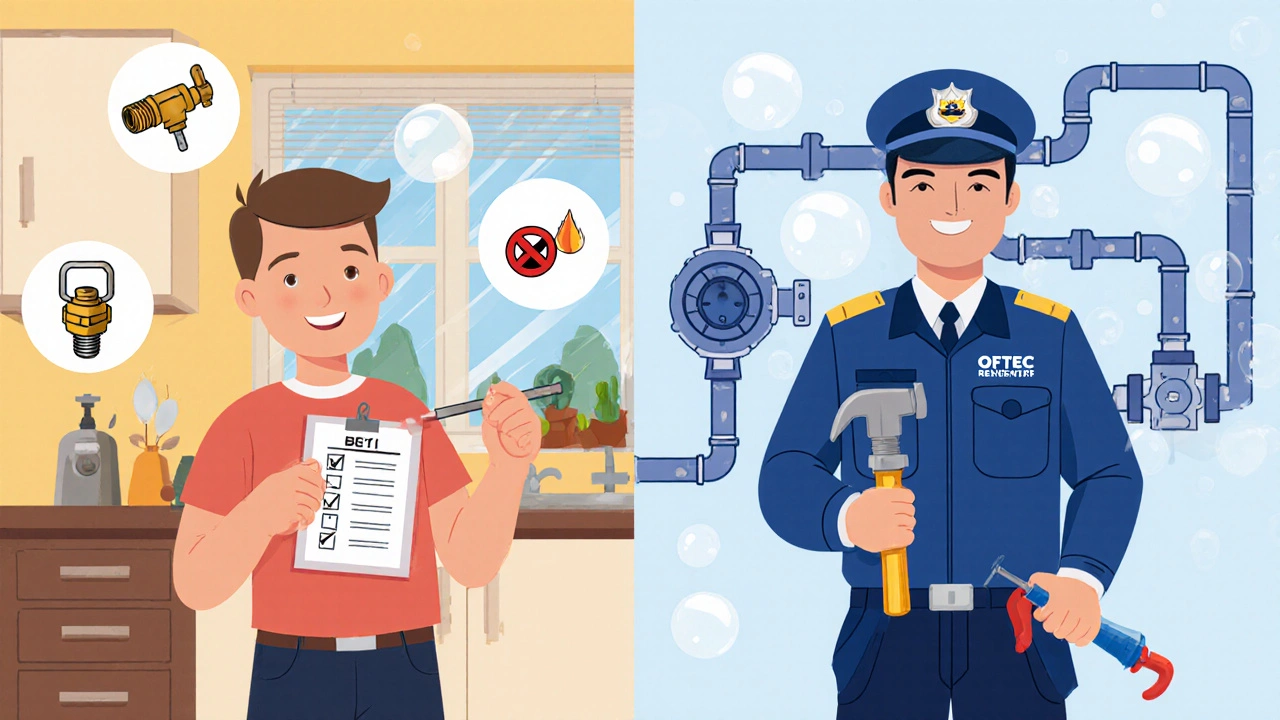
- 10 Oct 2025
- Gideon Thornton
- 0
When the flames on your gas cooktop is sputtering, won’t light, or smells like gas, you’re probably wondering whether you can fix it yourself. The short answer: yes, many common issues are within reach of a careful DIYer, but you need to respect the fire‑risk, follow the right steps, and know when to hand the job to a qualified engineer.
Quick Takeaways
- Most gas cooktop problems involve the igniter, burner, or gas valve and can be troubleshooted in under an hour.
- Always shut off the gas supply at the cylinder or mains valve before starting any work.
- Replace failed parts (igniter, burner caps, or thermocouple) with OEM equivalents to keep the appliance certified.
- Test for leaks with a handheld spark tester or soapy water after any disassembly.
- If the issue persists, smells like gas, or you spot a cracked valve, call a registered OFTEC-approved engineer.
Understanding How a Gas Cooktop Works
A gas cooktop is essentially a network of burners, each fed by a small valve that controls the flow of natural gas or LPG. When you turn a knob, a gas valve opens, sending gas to the burner. An igniter creates a spark that lights the gas, while a thermocouple monitors flame presence and shuts the valve if the flame goes out, preventing leaks.
All these components must meet BS 6172 standards for gas safety in the UK. When any part fails, the cooktop either won’t ignite, the flame will be uneven, or you’ll hear a hissing sound-each a clue to the culprit.
Common Problems and What They Mean
- No spark at all: Igniter is dead, dirty, or mis‑aligned.
- Flame won’t stay lit: Faulty thermocouple or a loose gas valve.
- Uneven or low flame: Clogged burner ports or a partially closed valve.
- Hissing sound: Gas is leaking - stop using the cooktop immediately.
Pinpointing the symptom narrows the parts you need to inspect.

Safety First: What You Must Know Before Touching Gas
Gas appliances are safe when installed correctly, but a DIY mistake can cause a dangerous leak. Follow these three rules every time you work on a cooktop:
- Turn off the gas: Locate the main shut‑off valve (usually near the meter or cylinder) and turn it clockwise until it stops.
- Ventilate the area: Open windows and keep a fan running to disperse any residual gas.
- Test for leaks: After re‑assembly, apply a solution of dish soap to joints. Bubbles mean a leak-tighten or replace the part before powering the appliance.
For extra confidence, keep a handheld spark tester (often sold by British Gas or DIY stores) on hand. It can quickly confirm that the igniter is producing a spark before you reconnect gas.
DIY Repair Steps You Can Do Yourself
Below is a step‑by‑step routine for the most frequent fixes. Gather a screwdriver set, a soft brush, a replacement igniter (or burner caps), and a bottle of soapy water.
- Disconnect power and gas. Unplug the cooktop and turn the gas valve off.
- Remove the burner cap. Most caps lift off with a gentle pull; some may have a retaining clip.
- Clean the burner ports. Use a soft brush or a pin to clear any food debris. Avoid using metal tools that could widen the holes.
- Inspect the igniter. Look for cracks or heavy carbon buildup. If it’s dirty, gently wipe with a dry cloth; if cracked, replace it.
- Check the thermocouple. It should be positioned directly in the flame. Straighten it if it’s bent, and verify it’s not corroded.
- Re‑assemble. Replace the burner cap, snap the igniter back into place, and re‑attach any clips.
- Test the spark. Turn the gas back on, then press the knob while watching for a spark. If you have a spark tester, place it near the igniter and confirm the spark.
- Check for leaks. Apply soapy water to all connections. If bubbles appear, tighten the fitting or replace the suspect part.
- Fire up the cooktop. Once you see a steady flame and no bubbles, you’re good to go.
Most homeowners can finish these steps in 30‑45 minutes, and the cost is usually limited to the price of a replacement part (around £15‑£30 for an igniter).
When to Call a Professional
Even with a solid DIY foundation, there are situations where a qualified engineer should take over:
- Persistent odor of gas after you’ve checked for leaks.
- Cracked or corroded gas valve - these are sealed units that need specialist tools.
- The cooktop is not listed under BS 6172 compliance after your repair.
- You’re uncomfortable turning off the mains gas supply or testing for leaks.
Registered OFTEC engineers have the training, insurance, and legal right to work on gas appliances in the UK. A professional visit typically costs £80‑£120 for a diagnostic call‑out, plus parts.

Cost Comparison: DIY vs Professional
| Aspect | DIY | Professional |
|---|---|---|
| Labor | Free (your time) | £80‑£120 call‑out |
| Parts (igniter, burner caps, etc.) | £10‑£35 | £20‑£50 (incl. markup) |
| Safety inspection | Self‑tested | Included in service fee |
| Risk of gas leak | Low if steps followed | Very low (certified engineer) |
| Total approximate cost | £10‑£50 | £100‑£170 |
For simple igniter or burner replacements, DIY saves you cash and time. However, if the gas valve or internal piping is involved, the professional route is safer and often required by law.
Pre‑Repair Checklist
- Have you turned off both electricity and gas?
- Do you have the correct replacement part (model number matches the cooktop brand)?
- Is your workspace well‑ventilated?
- Do you have a soap‑water solution and a spark tester ready?
- Can you access the gas valve easily, or will you need a professional to reach it?
Cross‑checking this list reduces the chance of a mid‑repair surprise.
Frequently Asked Questions
Can I replace the igniter on my own?
Yes. The igniter is a small, usually ceramic‑coated part that snaps into a bracket. Shut off gas, remove the burner cap, disconnect the old igniter, and snap the new one in place. Test the spark before you turn the gas back on.
What should I do if I smell gas after a repair?
Immediately turn off the gas supply, open windows, and leave the house if the smell is strong. Call the gas emergency line (UK: 0800111999) and a qualified engineer. Do not try to light any flame or operate electrical switches.
How often should I clean the burners?
At least once every six months, or whenever you notice uneven flames or food residue buildup. Regular cleaning keeps the ports clear and reduces the chance of mis‑fires.
Is it legal to repair a gas cooktop myself?
You can replace parts that do not involve the main gas valve or internal piping. However, any work that alters the gas supply line must be carried out by an OFTEC-registered engineer to meet UK regulations.
What’s the typical lifespan of a gas cooktop?
When well‑maintained, a gas cooktop can last 10‑15 years. Key wear items-igniters, burner caps, and thermocouples-usually need replacement every 3‑5 years.
Armed with the right knowledge, tools, and safety mindset, you can tackle most minor gas cooktop hiccups yourself. Remember, the goal is a steady flame, not a steady worry. If doubts linger, a quick call to a certified technician makes sure you stay safe while your meals keep cooking.

